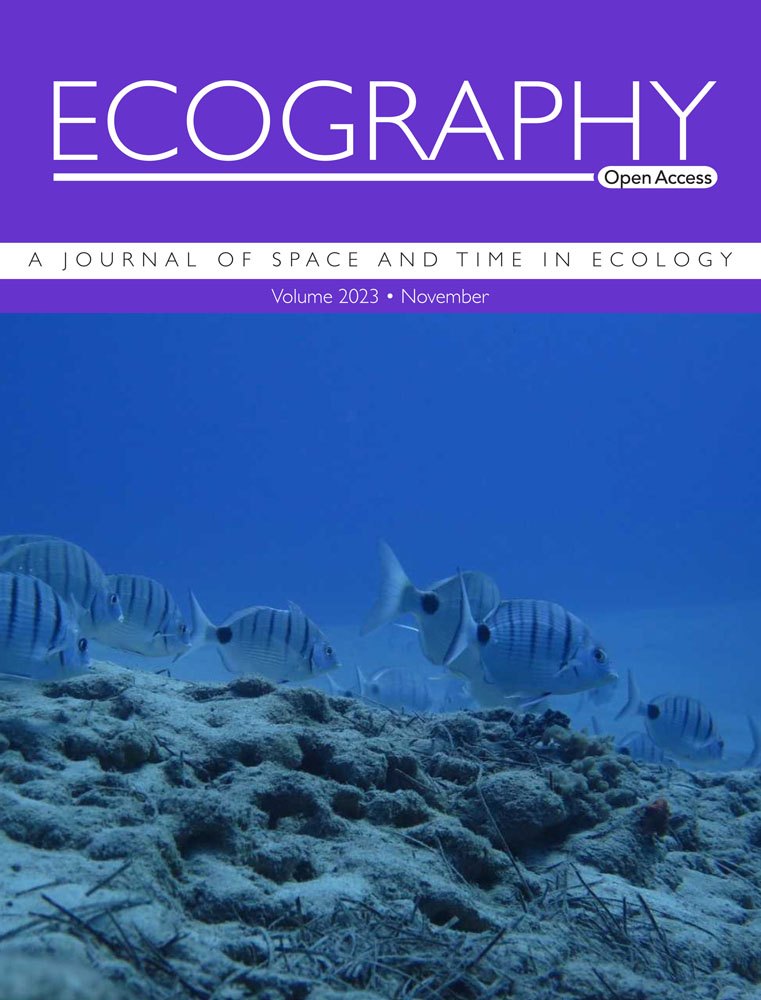The best of two worlds: toward large-scale monitoring of biodiversity combining COI metabarcoding and optimized parataxonomic validation
IF 5.4
1区 环境科学与生态学
Q1 BIODIVERSITY CONSERVATION
引用次数: 0
Abstract
In a context of unprecedented insect decline, it is critical to have reliable monitoring tools to measure species diversity and their dynamic at large-scales. High-throughput DNA-based identification methods, and particularly metabarcoding, were proposed as an effective way to reach this aim. However, these identification methods are subject to multiple technical limitations, resulting in unavoidable false-positive and false-negative species detection. Moreover, metabarcoding does not allow a reliable estimation of species abundance in a given sample, which is key to document and detect population declines or range shifts at large scales. To overcome these obstacles, we propose here a human-assisted molecular identification (HAMI) approach, a framework based on a combination of metabarcoding and image-based parataxonomic validation of outputs and recording of abundance. We assessed the advantages of using HAMI over the exclusive use of a metabarcoding approach by examining 492 mixed beetle samples from a biodiversity monitoring initiative conducted throughout France. On average, 23% of the species are missed when relying exclusively on metabarcoding, this percent being consistently higher in species-rich samples. Importantly, on average, 20% of the species identified by molecular-only approaches correspond to false positives linked to cross-sample contaminations or mis-identified barcode sequences in databases. The combination of molecular methodologies and parataxonomic validation in HAMI significantly reduces the intrinsic biases of metabarcoding and recovers reliable abundance data. This approach also enables users to engage in a virtuous circle of database improvement through the identification of specimens associated with missing or incorrectly assigned barcodes. As such, HAMI fills an important gap in the toolbox available for fast and reliable biodiversity monitoring at large scales.两全其美:结合COI元条形码和优化的准分类学验证,实现生物多样性的大规模监测
在昆虫数量空前减少的背景下,拥有可靠的监测工具来测量物种多样性及其在大尺度上的动态至关重要。基于dna的高通量鉴定方法,特别是元条形码,被认为是实现这一目标的有效途径。然而,这些鉴定方法受到多重技术限制,导致不可避免的假阳性和假阴性物种检测。此外,元条形码不能可靠地估计给定样本中的物种丰度,而这是记录和检测大规模种群下降或范围变化的关键。为了克服这些障碍,我们提出了一种人类辅助分子鉴定(HAMI)方法,这是一种基于元条形码和基于图像的准分类学验证输出和丰度记录相结合的框架。我们通过检查来自法国各地生物多样性监测计划的492个混合甲虫样本,评估了使用HAMI优于单独使用元条形码方法的优势。当完全依赖元条形码时,平均有23%的物种被遗漏,这一比例在物种丰富的样本中一直更高。重要的是,平均而言,仅通过分子方法识别的物种中有20%对应于与交叉样本污染或数据库中错误识别的条形码序列相关的假阳性。分子方法和准分类学验证在HAMI中的结合显著减少了元条形码的固有偏差,并恢复了可靠的丰度数据。这种方法还使用户能够通过识别与丢失或错误分配的条形码相关的标本来参与数据库改进的良性循环。因此,HAMI填补了可用于大规模快速可靠生物多样性监测工具箱的重要空白。
本文章由计算机程序翻译,如有差异,请以英文原文为准。
求助全文
约1分钟内获得全文
求助全文
来源期刊

Ecography
环境科学-生态学
CiteScore
11.60
自引率
3.40%
发文量
122
审稿时长
8-16 weeks
期刊介绍:
ECOGRAPHY publishes exciting, novel, and important articles that significantly advance understanding of ecological or biodiversity patterns in space or time. Papers focusing on conservation or restoration are welcomed, provided they are anchored in ecological theory and convey a general message that goes beyond a single case study. We encourage papers that seek advancing the field through the development and testing of theory or methodology, or by proposing new tools for analysis or interpretation of ecological phenomena. Manuscripts are expected to address general principles in ecology, though they may do so using a specific model system if they adequately frame the problem relative to a generalized ecological question or problem.
Purely descriptive papers are considered only if breaking new ground and/or describing patterns seldom explored. Studies focused on a single species or single location are generally discouraged unless they make a significant contribution to advancing general theory or understanding of biodiversity patterns and processes. Manuscripts merely confirming or marginally extending results of previous work are unlikely to be considered in Ecography.
Papers are judged by virtue of their originality, appeal to general interest, and their contribution to new developments in studies of spatial and temporal ecological patterns. There are no biases with regard to taxon, biome, or biogeographical area.
 求助内容:
求助内容: 应助结果提醒方式:
应助结果提醒方式:


